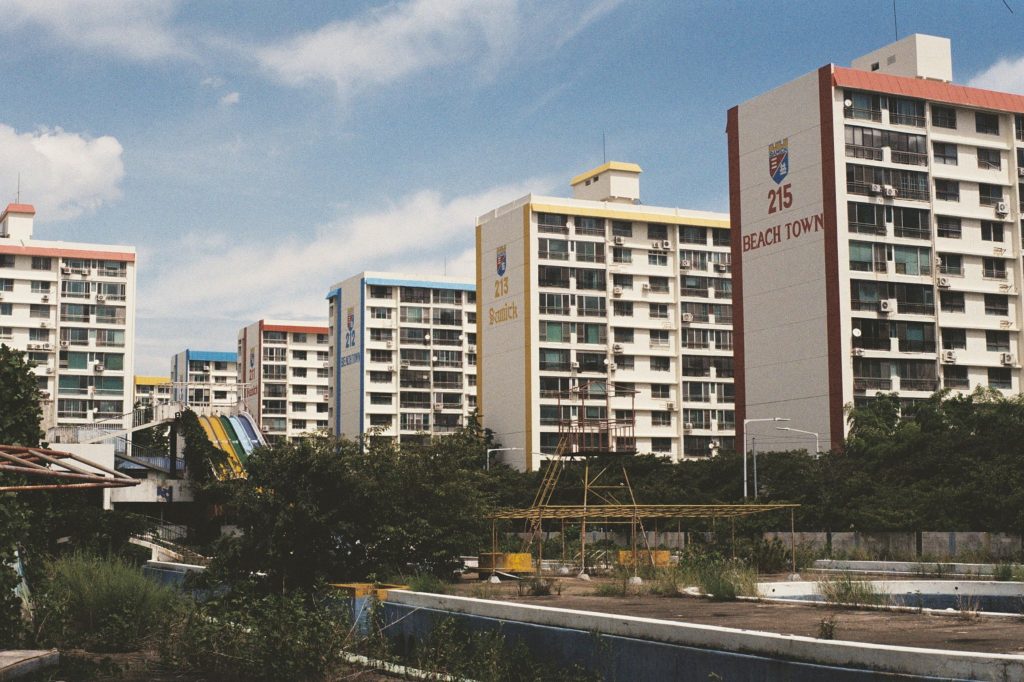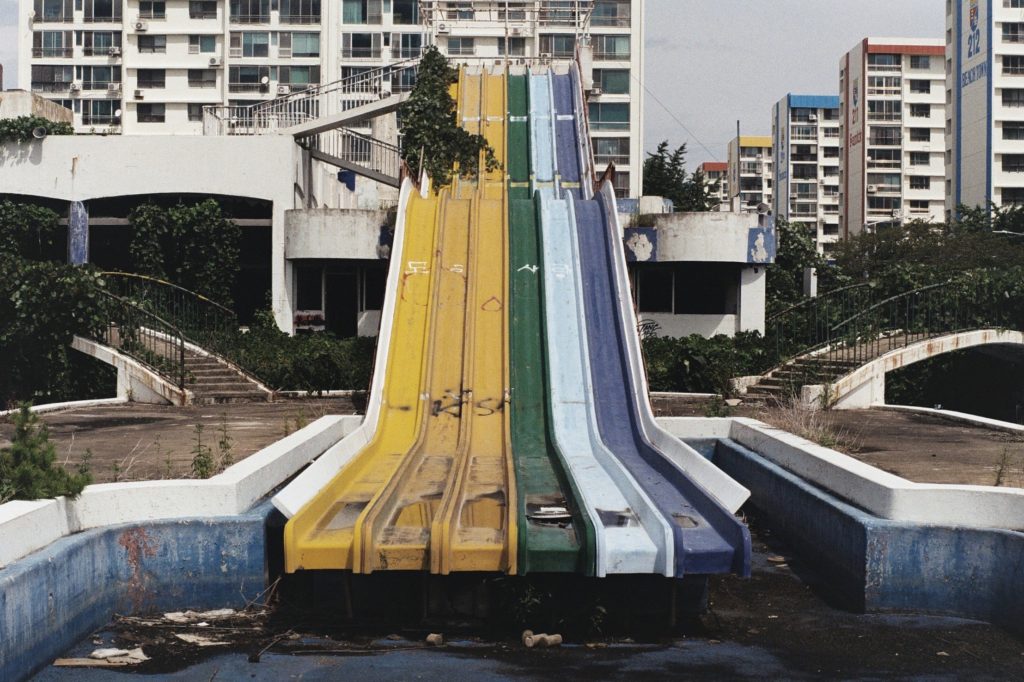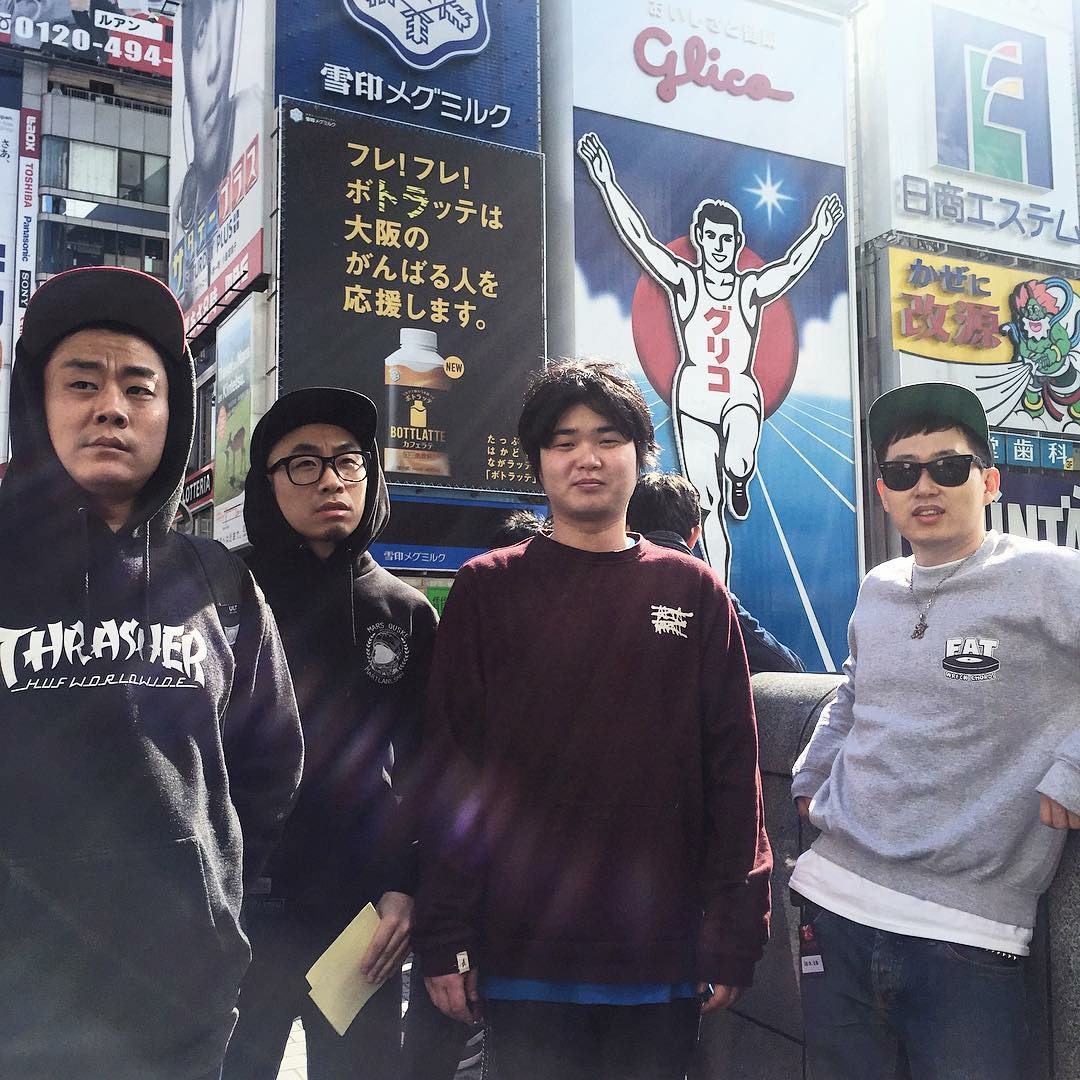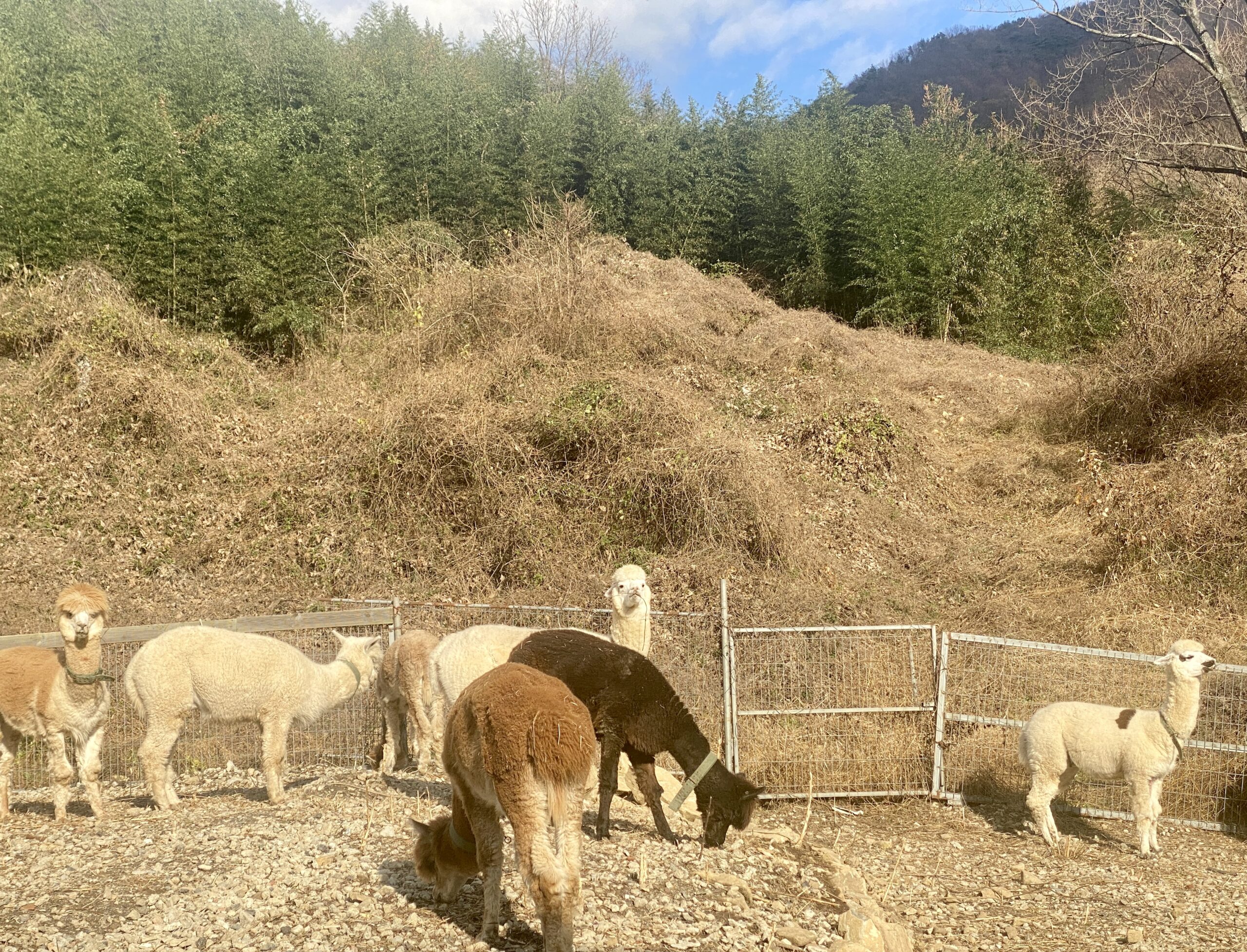A Visit to the Old Beach Town Slides
Written and photographed by Ryan Berkebile.
All the articles I have written for the Gwangju News have either been about urban exploration or Korean music that is not K-pop. I have plenty to say on both subjects, yet never had the two seemingly separate worlds overlap until recently when I came across an album from the Busan indie band Say Sue Me (세이수미). The album cover for their second full-length album, When We Were Together, shows three people wandering around an abandoned swim park in fall or winter. One person is climbing a ladder to an old lifeguard post. Another individual is taking a picture of the climber atop the structure. The third member of the group is walking away as if to avoid being in the photo.

(Photo courtesy of Electric Muse/Damnably Records)
In the background, a series of apartment buildings labeled “Beach Town” appears to recede into infinity. I am surprised by how bright and vibrant the flats are, as minimalist high-rises dominate the skyline these days. The pure cream color mixes harmoniously with the red, yellow, and blue trims of each building. It is as if a child’s birthday cake had been cut evenly into sixteen rectangular pieces. The dreamy album cover looks like an Instagram photo, yet the spirit of the composition still shines through. The loneliness or bleakness one might feel when coming across an abandoned water park is balanced out by the blue sky, clouds, and the brilliant apartment complex. After discovering this album, I knew I had to visit.

The music of Say Sue Me has a similar dynamic at work on their album When We Were Together. Say Sue Me play jangly, indie rock with bouncy bass and upbeat tempo. On the surface, it is excellent music for a day at the beach. It is sunny, carefree, and full of life. However, behind the pleasant sound lie melancholy, yearning, and alienation. Lyrical subjects often include a longing for the past, restlessness, and drinking alcohol as a salve for a troubled mind. The band wears their love for U.S. indie bands Yo La Tengo and Pavement on their sleeves. Listen in closer, and you will also hear their appreciation for the Ramones and Velvet Underground. If you like those bands, then you will dig Say Sue Me. They are a soundtrack for looking back at my personal history.
When I listen, I am transported back to the mid-1990s when alternative/independent/D.I.Y. (Do It Yourself) music was central to my identity. I can look back fondly at my transformation into adulthood. As a man rapidly approaching the big four-oh, music plays a lesser definition of me. I am captivated by other things like urban exploration and Korean history. It takes a lot more effort for me to listen to new bands. Even though Say Sue Me’s second full-length album cover captured my interest, it took me a while to put in the time to listen. I am glad I did, as it gets progressively better with each listening. Most of the music I listen to these days is from the past, usually being reissued on record labels documenting the popular sounds of yesteryear. Discovering old recording artists is a gateway to study Korea’s history. Listening to the music of Lee Nan-young (이난영), Shin Jung-hyeon (신중현), or even Jeju shamans (제주 무속음악) fuels my historical and urban explorations around the country. Lee and Shin provide a soundtrack to my favorite areas of study related to Korea: the Japanese colonial era (1910–1945) and the “Miracle on the Han River” period (1961–1997).

Late summer at the abandoned water park.Busan’s Beach Town apartments are an example of high-rise apartment complexes that sprouted up around the country in post-war Korea. They are a monument to the hardworking mindset that brought Korea from a third-world to a first-world country in a short amount of time. It takes a certain mindset and discipline to work hard to escape poverty. While people generally live more comfortable lives these days, the drive for modernization still runs strong. The push for newer state-of-the-art amenities means that working-class neighborhoods are being cleared out for “progress.” That means older, traditional houses like the hanok (한옥) or Japanese colonial buildings are getting razed. Apartment complexes less than forty years old are being torn down. I think this abandoned swim park fell victim to this hyper-development, as there are newer, cutting-edge water park options available. Fewer people paid to visit an aging dinosaur, so Beach Town management decided to shut the place down.

Hyper-modernization also affects young Koreans’ quality of life. High expectations have left kids and young adults feeling disillusioned with life. Society’s expectation to over-study, work for a large family-owned corporation called a chaebeol (재벌), and buy a top-of-the-line, modern apartment weighs down on members of the band. The song “Old Town” expresses the alienation of being left behind by friends and society with the lyrics “All the friends I used to know left this town / Only I’m getting old with this town.” Yet the pull of nostalgia keeps singer/guitarist Choi Su-mi (최수미) put as she sings, “I just wanna stay here / But I wanna leave here.”
Do members of the band have fond memories of the park when they were children, or is the park itself representative of simpler, carefree days? The album artwork for When We Were Together depicts young adults merrily exploring an abandonment temporarily free from their daily pressures. Say Sue Me has been able to channel the angst, anxiety, and rage of living in “Hell Joseon” (헬조선) to create meaningful, inspiring music. Their music speaks truthfully about their experience and allows me to reflect on my youth. Their music is a joyful, challenging soundtrack for people who refuse to be round pegs squeezed into square holes.
The Author
When Ryan Berkebile is not taking pictures of abandoned hanoks, he likes to read books about Korean shamanism and write blog posts for his website, Long Distance Runner. You can see what he has been up to at longdistancerunner.org and on Instagram at @l0ngdistancerunner and @naturaryan1600





